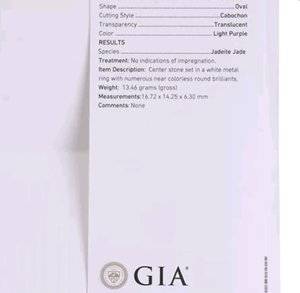Mrs_Strizzle
Brilliant_Rock
- Joined
- Jun 14, 2018
- Messages
- 1,601
After all the recent postings about jade here, it has spiked my interest. I am smart enough to know what I don't know (which is just about everything) so I was looking for Jade that have reputable reports. I found a lovely lavender jade ring with a GIA report that says "no indication of impregnation". I have also seen reports for green jade that say "NATURAL COLOR. No indication of impregnation". So is it safe to assume the lavender jade has been dyed? Or is that one of the specific questions you have to submit and pay for at GIA (like origin) and hence why it isn't on there? Also, if so, would you gather that it is dyed purple and that's why they didn't request it from the GIA (report was issued in Oct 201 . Thanks for any help.
. Thanks for any help.








300x240.png)